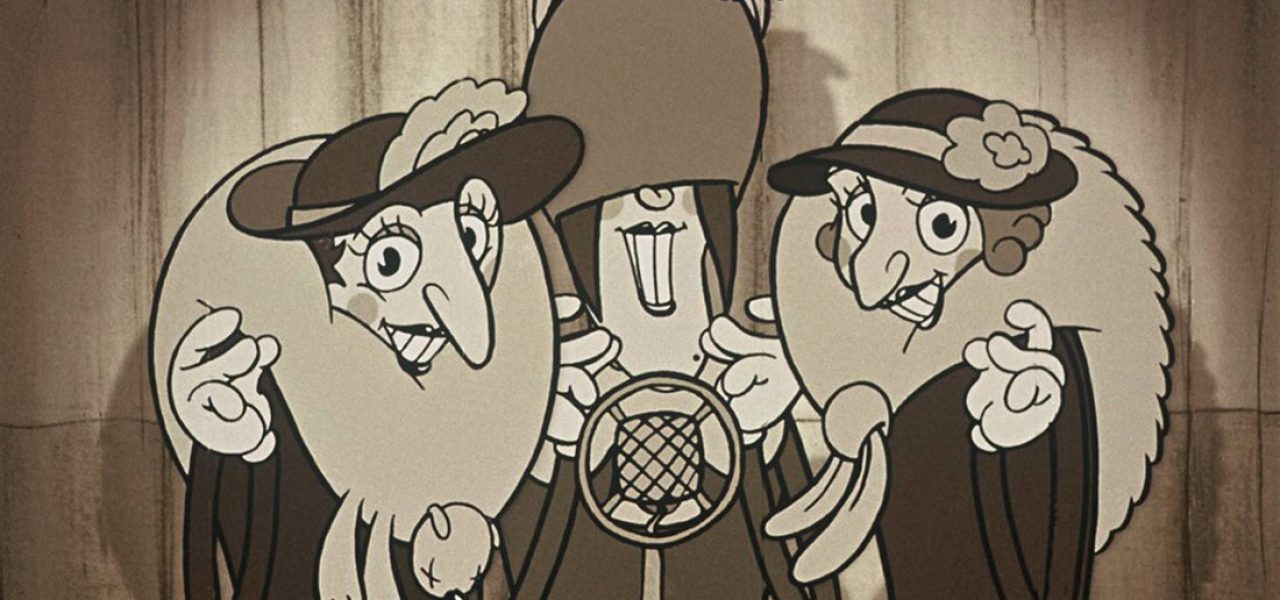
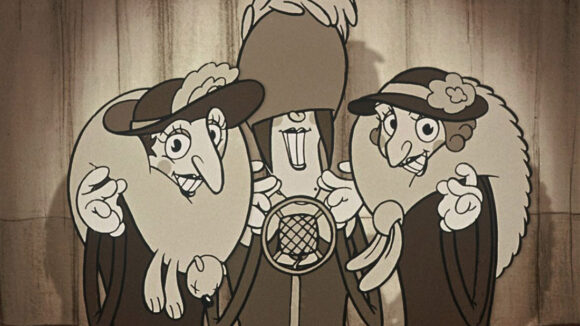
‘The Triplets of Belleville’ 15th Anniversary: 7 Insights Into The Making Of A Contemporary Classic
Overflowing with creative ambition and stylistic innovation, The Triplets of Belleville, Sylvain Chomet’s debut feature, is a precious rarity among animated works in the 21st century.
Following its premiere at the Cannes Film Festival, the film opened theatrically in France on June 11, 2003 where it quickly gained attention for its distinctive aesthetic and storytelling. Sony Pictures Classics picked up U.S. rights and strategically pushed it through the fall festivals and awards circles, efforts that resulted in two Academy Award nominations: Best Animated Feature and Best Original Song.
Fifteen years later, the eccentricity of the character design, the narrative’s heartfelt antics, and the indelible music continue to charm artists and animation fans alike. Chomet’s idiosyncratic and matchless artistry goes beyond just championing quirkiness but carries strong notions about life through a comedic lens. Rose, Violette, and Blanche, the triplets, as well as Madame Souza, her dog Bruno, and her grandson Champion, all come from an intimate place in the director’s imagination and were given life via pencil and paper. Their story is not one about gangsters, cyclists, and washed-up stars, but about dreams followed, family sticking together, and the peculiarities that make some stand out from the crowd.
Here are seven pieces of trivia and fun anecdotes related to the making of this landmark work that will will hopefully remind readers of how indelibly unique, humorous, and endearing it is.
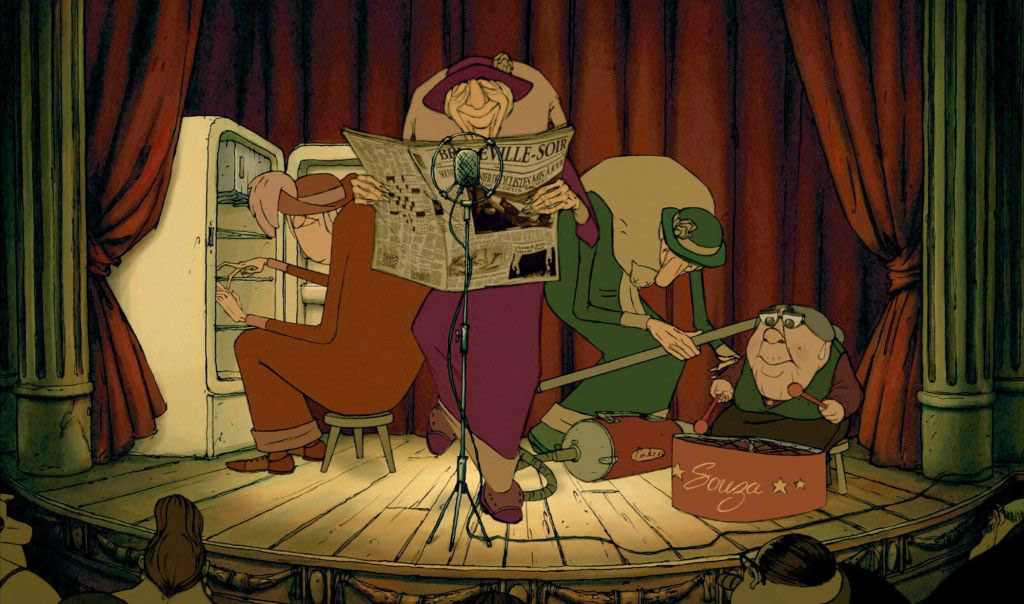
1. Music and Appliances as Instruments
Devoid of any significant dialogue, the film relied on its prevalent musicality to create its irreverent tone and to denote its more mournful moments. For example, Chomet considered pivotal to use Mozart’s Mass C Minor during the scene in which Madame Souza and her dog Bruno cross the Atlantic to rescue Champion. It was one of the director’s favorite sequences because of the poignancy and defiance of her actions.
The rest of the music was combination between composer Benoit Charest’s creations and Chomet’s ideas. In order to create the song for the scene known as “Vacuum Cleaner Cabaret,” where the triplets and Madame Souza perform together, the director suggested Charet used a vacuum cleaner to elicit strange sounds. He played the vacuum’s tube as a wind instrument. He would place his hand over the hole to figure out what kind of sounds it would make and he would control the airflow with his fingers. The vacuum cleaner used for the film was eventually named “Mouf-Mouf.”
Other household appliances and objects turned into percussions included refrigerator grills, which came from Chomet’s own fridge, a newspaper, and bicycle wheel. Essentially, what the characters on screen are playing is exactly what was employed to construct the track.
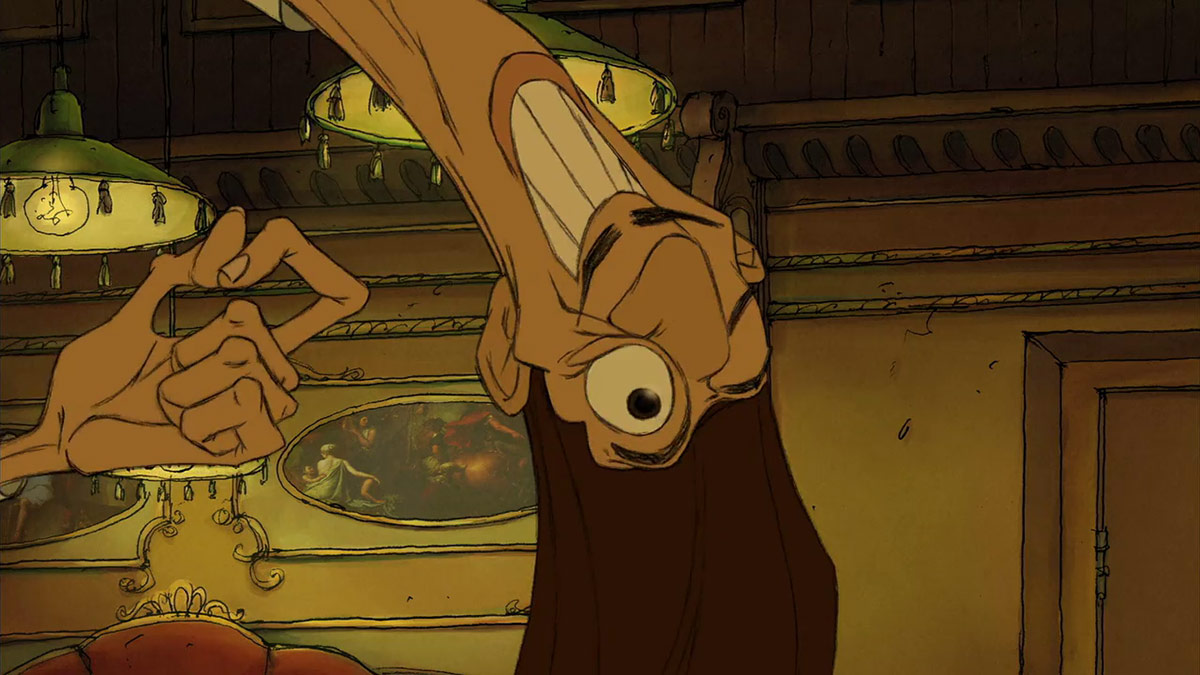
2. Animator and Character Become One
According to Chomet, animation is the medium where the characters express their feelings through the way they move. He explained that what he learned in England, which is very different from the North American style of doing things, is that everything is based on timing. At first a character doesn’t do anything and then with just a little gesture his emotions come to life, and those emotions transform it into a funny or sad character.
In Chomet’s experience, when people spend eight hours a day, five days a week, and sometimes two years animating on a film, they connect with the character and when they see it on screen they feel like they are the character, or that in a way the character is like them. Animator Hugues Martel, who was in charge of Blanche, the triplet with the braids, figured out how to animate her hair by acting it out and exaggerating the motions when she tosses one braid first and then the other.
3. Belleville’s Architectural Style
To design Belleville, art director Evgeni Tomov’s objective was to imagine a city that could instantly be perceived as a place that really exists, but without resembling one specific town in reality. Belleville feels like a city, but not one that you would fully recognize. It’s a combination between Paris, New York, and Montreal. Chomet was very precise about his wishes regarding Belleville’s architectural style and the ambience. It needed to be a very rich and interesting metropolis where the majority of the people follow the cult of consumerism and food.
Local characters are mostly overweight, as a commentary on their material and superfluous wealth. The ornate nature of the skyline complicated the work of the art department in one early scene shortly after Madame Souza and Bruno arrive in Belleville. As the camera cranes up from characters to a view of the entire city, the buildings closer to the camera were moving faster and were on a different angle, and behind them there was a huge panoramic rendering. This shot required five different overlays of buildings moving at different speeds to produce a sense of space.
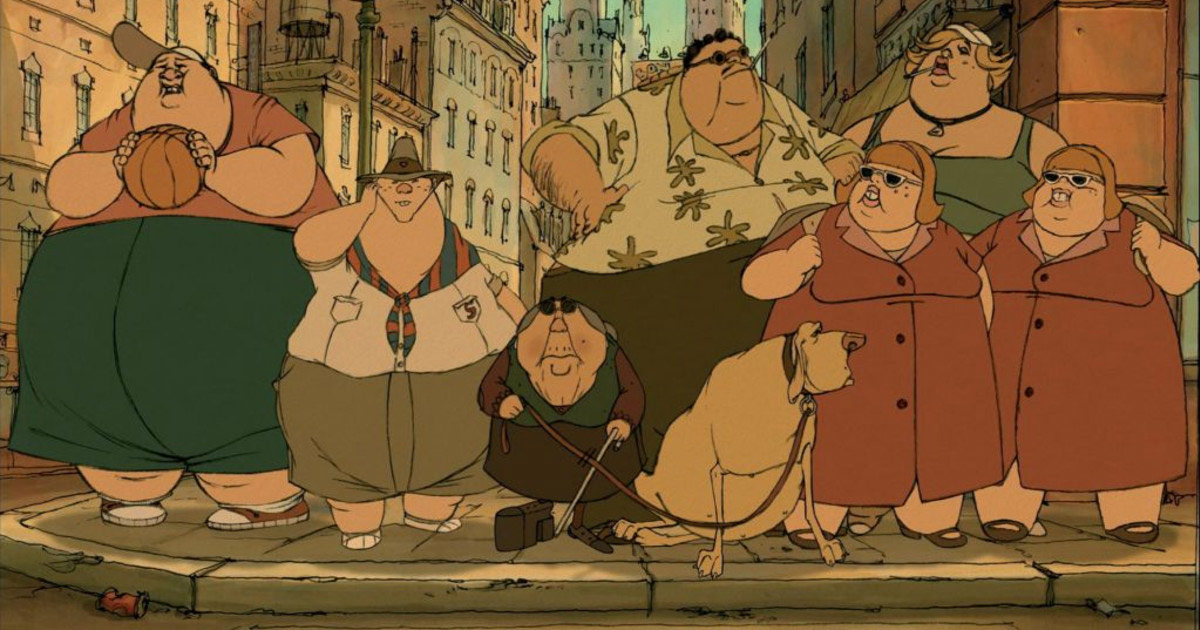
4. 3D Vehicles and Explosions
Conscious that without the use of digital tools some elements wouldn’t be possible Sylvain Chomet and his team decided to use 3d animation to show bicycles, cars, boats, traffic jams, and the Tour de France. Since they wanted to have the 2d and 3d animation coexist in the same film and not come across as disjointed parts, they tired to destroy the perfect and clean look of cg and make it feel as if it was drawn by hand.
Chomet also noted that the reasoning behind this was because if you give a 2d animator something like a car or a bicycle, he is going to go mad and it’s going to be a terrible job for him because there is no life to a bicycle. Another practical use of cg was for the multiple explosions in the story, in particular the enormous one the triplets use to catch frogs where tons of mud flies in the air. Hand-drawn effects weren’t satisfactory, so compositing supervisor Pieter Van Houte added 3d elements to it.
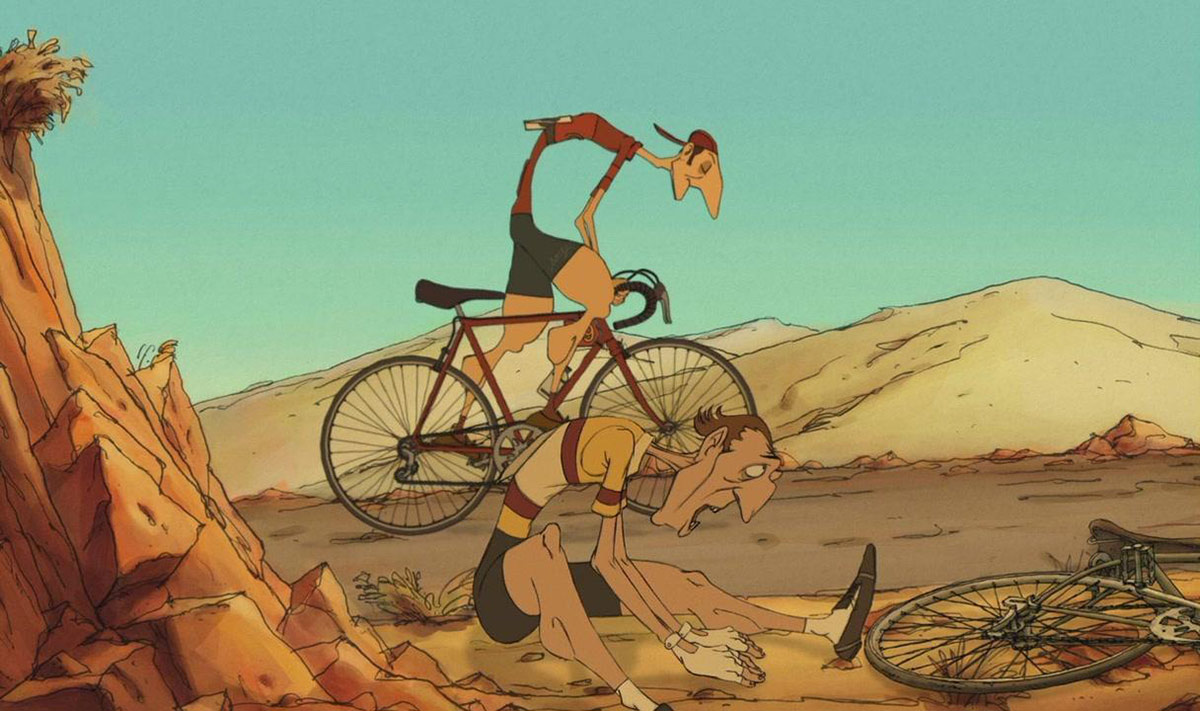
5. Expressive Colors
Selecting the color palette for the background in each sequence was a process based on the emotional tone of the story in that moment. The childhood scenes are very nostalgic and take place during the 1950s, thus they have sepia hues or gentle coloring. Industrialized Paris is dull, sad, and marked by constant raining, so the colors are dark and cold. For the Tour de France segment, which is very sunny and hot, orange shades were the obvious choice. Belleville, on the other hand, is meant to resemble the North American way of lighting streets and buildings, specifically in Montreal or Quebec. Chomet felt that in those cities the streetlights showcase very strong green color spots like Edward Hopper paintings.
6. Purposeful and Fragile Characters
Curiously enough, most of the characters in this film were inspired by people director Sylvain Chomet knew or ran into. Bruno is based on a real dog he saw on the streets of Montpellier, France. He describes it as “an absolutely enormous and fat dog.” The eponymous triplets were a reflection of his grandmother on his mother’s side. She was a colorful character and a strong woman. He never met her, but everyone in his family would tell him anecdotes about her. He grew up knowing she was a lovely person with a big heart. The essence of the triplets comes from her.
Champion, the kidnapped cyclist, emerged from the artist’s encounter with a mechanic working in a garage who was repairing some cars. It was the first character he envisioned and eventually transformed him from a repairman to an athlete. Courageous Madame Souza was based on an idea he had about a Portuguese lady with clubfoot.
Because it’s a nearly silent movie, Chomet knew the audience wouldn’t be able to recognize the character through their voices, so he gave each of them singular shapes. When viewers see a short figure they immediately know it’s Madame Souza and when they see the tall and rectangular figures dressed in black they associate them with the mafia. It’s a great trick that can be done in animation, but not in live action.
There is a certain melancholy to The Triplets of Belleville because the characters exhibit human flaws and undergo painful situations. Chomet birthed the characters to be fragile, to have meaningful childhoods, lives of their own, and to exist with more purpose than just being funny cartoons.
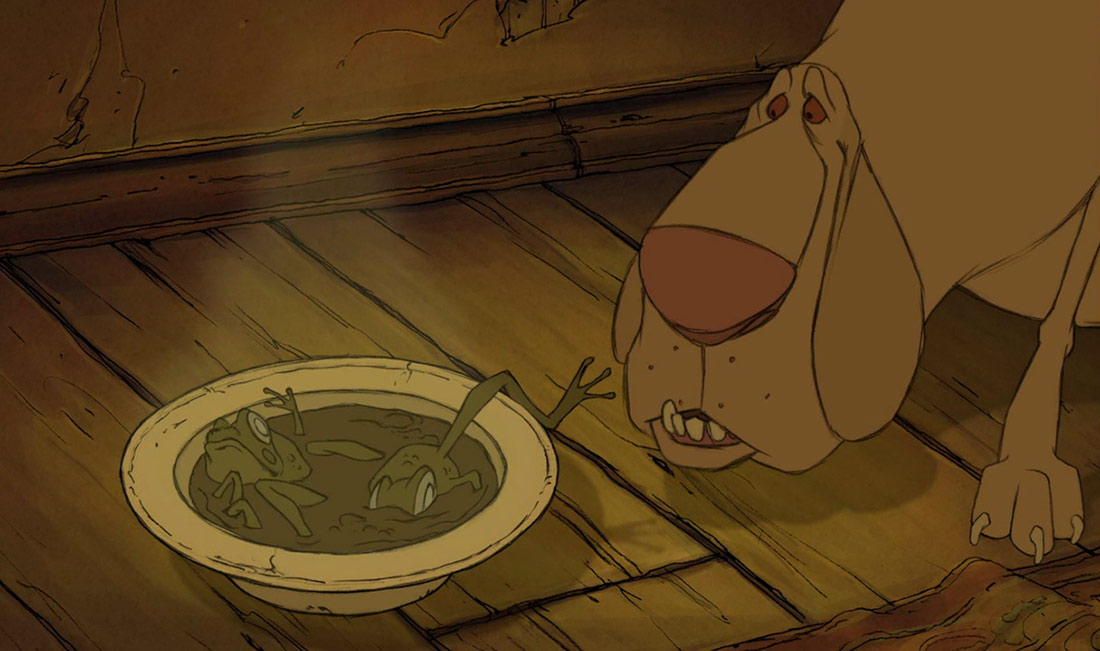
7. Iconic Opening Sequence and PG-13 Rating
The black-and-white opening represents the best days in the lives of the triplets and the city alike. Animator Benoit Feroumont was in charge of this sequence, and had to find a particular dance style for the triplets so they could be instantly recognized later in the film despite the passage of time. Pushing to make the footage look as if ripped from a 1930s newsreel, the team digitally scratched the film to give it that worn feel. The effect was so convincing that some projectionists at movie theaters panicked when they first saw it, believing the film had been damaged in transit.
Now an iconic song, Belleville Rendez-vous was based on a piece composer Benoit Charest had made for another film. The song was too playful for the topic of the original picture it was intended for, so he put it on the demo for Sylvain Chomet, who immediately thought it was the perfect theme song for The Triplets of Belleville.
There are multiple cameos in this energetic set piece, including emblematic jazz guitarist Django Reinhardt, whose dexterity is magnified for comedy purposes. Dancer Josephine Baker appears topless for a few seconds, which was enough to earn the film a PG-13 rating in the U.S. (and the equivalent 12A in the U.K.). Lastly, entertainer Fred Astaire, animated by Gerard Boulet, is shown having a confrontation with his shoes. This occurrence propelled a Canadian animator working on the film to voice his dissatisfaction, as he believed it was unfair for Fred to lose the fight with the shoes.

.png)